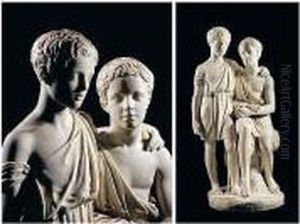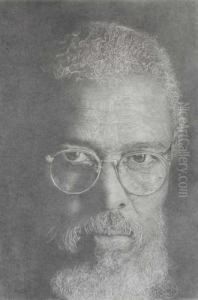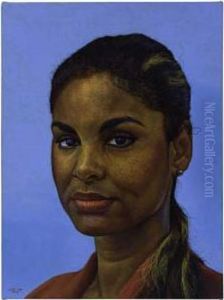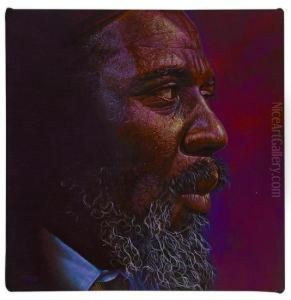Richard James Wyatt Paintings
Richard James Wyatt was an English sculptor renowned for his beautiful marble sculptures that often drew upon classical antiquity for inspiration. Born on May 23, 1795, in London, he was part of a family that was already steeped in the arts; his father, grandfather, and uncle were all sculptors. His cousin, the architect Sir Jeffry Wyattville, was responsible for the alterations at Windsor Castle, which speaks to the strong artistic lineage in the Wyatt family.
Wyatt showed early talent in sculpture and began his formal training under John Charles Felix Rossi, an established sculptor of memorials and architectural decorations. By the age of 20, Wyatt had garnered enough attention to be admitted to the Royal Academy schools, where he further honed his craft.
In 1818, Wyatt decided to move to Rome, which was then the epicenter of neoclassical sculpture. This proved to be a pivotal decision for his career. In Rome, he became a prominent member of the expatriate artist community and was influenced by the works of Antonio Canova and Bertel Thorvaldsen, leading sculptors of the time. Wyatt's work was characterized by its exquisite finish and refined details, particularly in his portrayal of the human form, which often reflected a sentimental and idealized vision of beauty.
Wyatt's marble sculptures became highly sought after, and he received commissions from members of the British aristocracy and royalty. Notably, he sculpted several busts of members of the Royal Family. His works were exhibited in the Royal Academy of Arts in London, and he gained considerable fame in his lifetime.
Wyatt never married and spent much of his life in Italy, where he continued to produce works that were shipped to Britain and other parts of Europe. His sculptures are now held in numerous museum collections, and he is remembered for his contribution to the neoclassical tradition in sculpture.
Richard James Wyatt passed away on May 29, 1850, in Rome. His legacy continues to be appreciated by art historians and sculpture enthusiasts who regard him as a significant figure in the tradition of 19th-century English sculpture.



